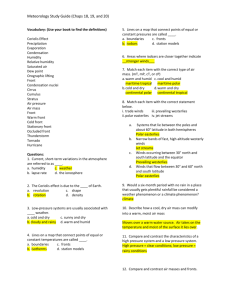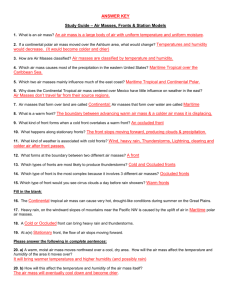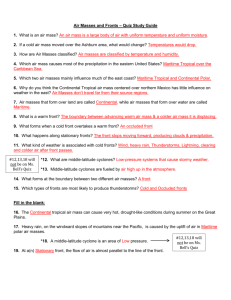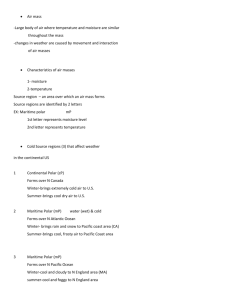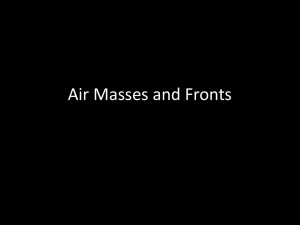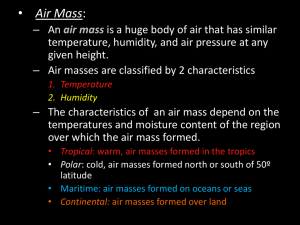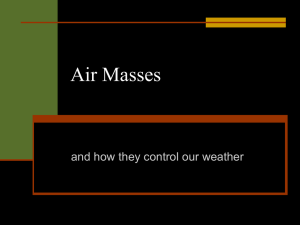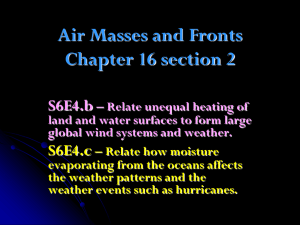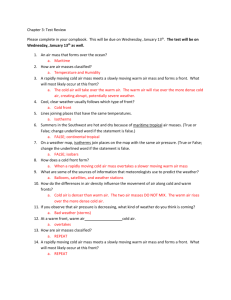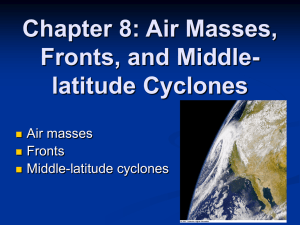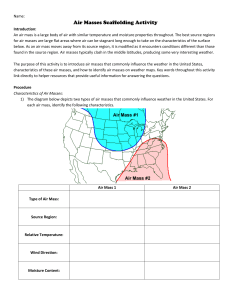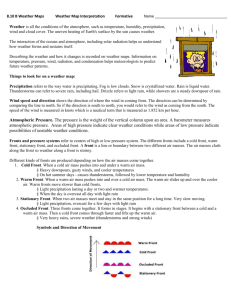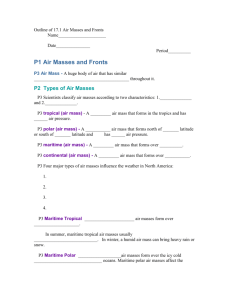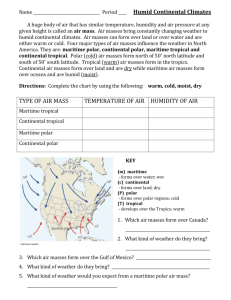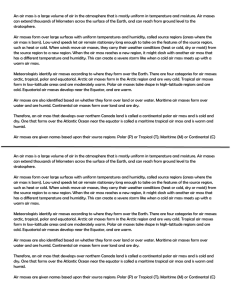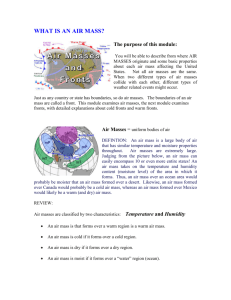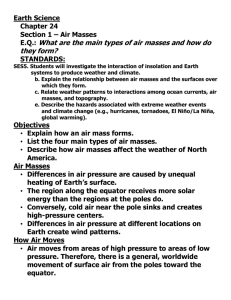eastern cool
advertisement
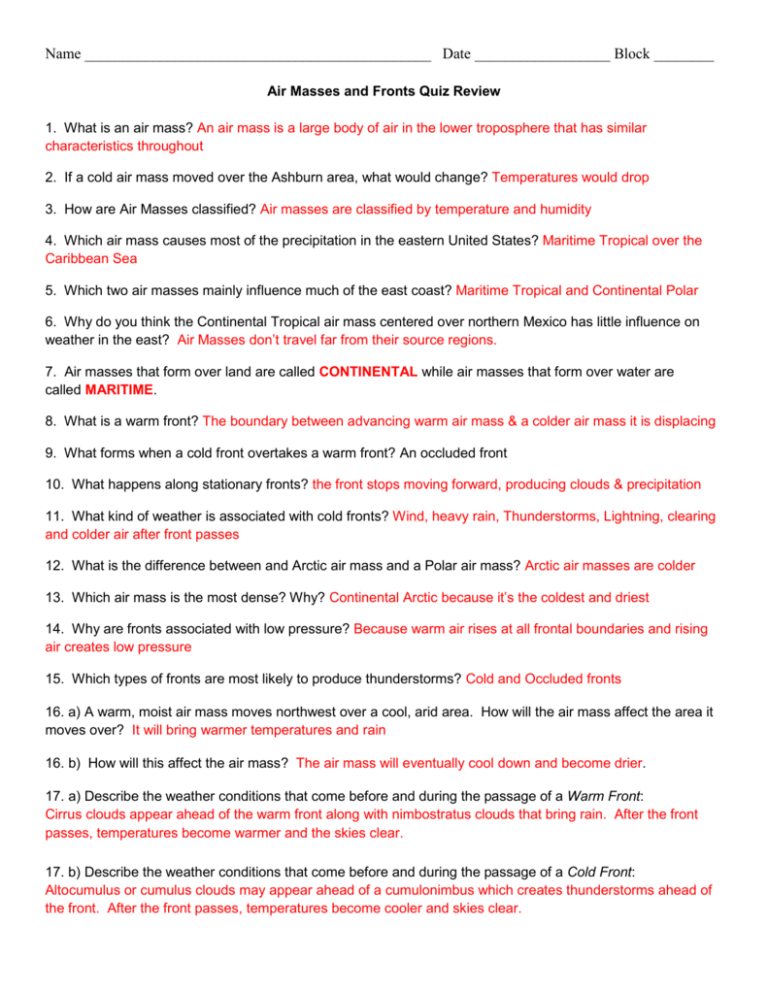
Name ______________________________________________ Date __________________ Block ________ Air Masses and Fronts Quiz Review 1. What is an air mass? An air mass is a large body of air in the lower troposphere that has similar characteristics throughout 2. If a cold air mass moved over the Ashburn area, what would change? Temperatures would drop 3. How are Air Masses classified? Air masses are classified by temperature and humidity 4. Which air mass causes most of the precipitation in the eastern United States? Maritime Tropical over the Caribbean Sea 5. Which two air masses mainly influence much of the east coast? Maritime Tropical and Continental Polar 6. Why do you think the Continental Tropical air mass centered over northern Mexico has little influence on weather in the east? Air Masses don’t travel far from their source regions. 7. Air masses that form over land are called CONTINENTAL while air masses that form over water are called MARITIME. 8. What is a warm front? The boundary between advancing warm air mass & a colder air mass it is displacing 9. What forms when a cold front overtakes a warm front? An occluded front 10. What happens along stationary fronts? the front stops moving forward, producing clouds & precipitation 11. What kind of weather is associated with cold fronts? Wind, heavy rain, Thunderstorms, Lightning, clearing and colder air after front passes 12. What is the difference between and Arctic air mass and a Polar air mass? Arctic air masses are colder 13. Which air mass is the most dense? Why? Continental Arctic because it’s the coldest and driest 14. Why are fronts associated with low pressure? Because warm air rises at all frontal boundaries and rising air creates low pressure 15. Which types of fronts are most likely to produce thunderstorms? Cold and Occluded fronts 16. a) A warm, moist air mass moves northwest over a cool, arid area. How will the air mass affect the area it moves over? It will bring warmer temperatures and rain 16. b) How will this affect the air mass? The air mass will eventually cool down and become drier. 17. a) Describe the weather conditions that come before and during the passage of a Warm Front: Cirrus clouds appear ahead of the warm front along with nimbostratus clouds that bring rain. After the front passes, temperatures become warmer and the skies clear. 17. b) Describe the weather conditions that come before and during the passage of a Cold Front: Altocumulus or cumulus clouds may appear ahead of a cumulonimbus which creates thunderstorms ahead of the front. After the front passes, temperatures become cooler and skies clear. Fill in the blank: 18. The CONTINENTAL tropical air mass can cause very hot, drought-like conditions during summer on the Great Plains. 19. Heavy rain, on the windward slopes of mountains near the Pacific, is caused by the uplift of air in MARITIME polar air masses. 20. Air masses that form over dry land are CONTINENTAL air masses. 21. When a cold front ‘catches up’ with a warm front an OCCLUDED FRONT forms. 22. The boundary that separates opposing air masses is called a FRONT Use the figure below to answer the following questions: C A G E D B F 23. Which air masses bring cool, dry air to large regions of eastern North America? CONTINETAL POLAR or CONTINENTAL ARCTIC 24. The air masses labeled A & G are classified as MARITIME POLAR. 25. The air masses labeled B and F bring warm, moist air to the United States. 26. The air mass labeled D would be represented by the symbol cT. In the space below, draw the following symbols that would appear on a weather map:


